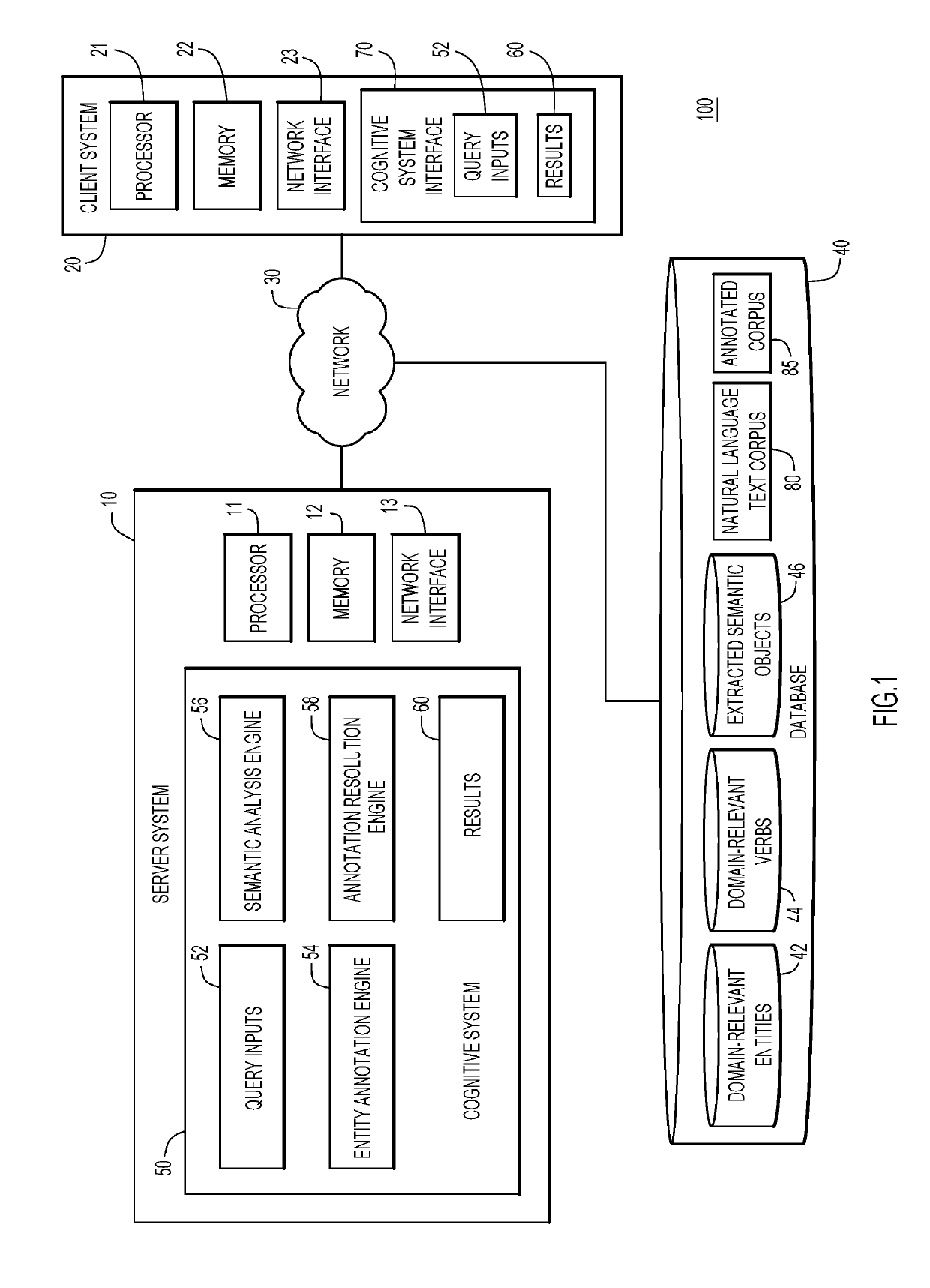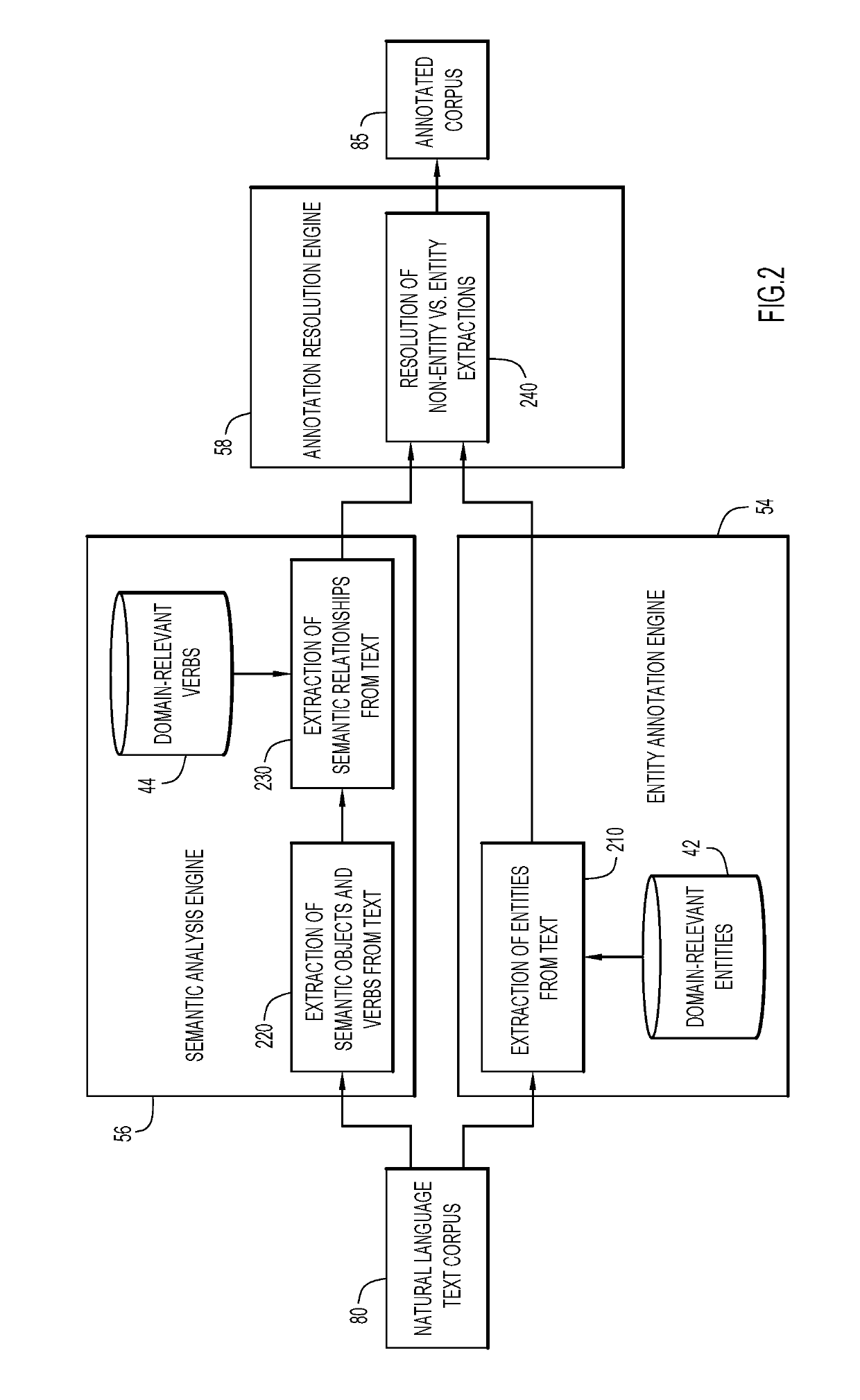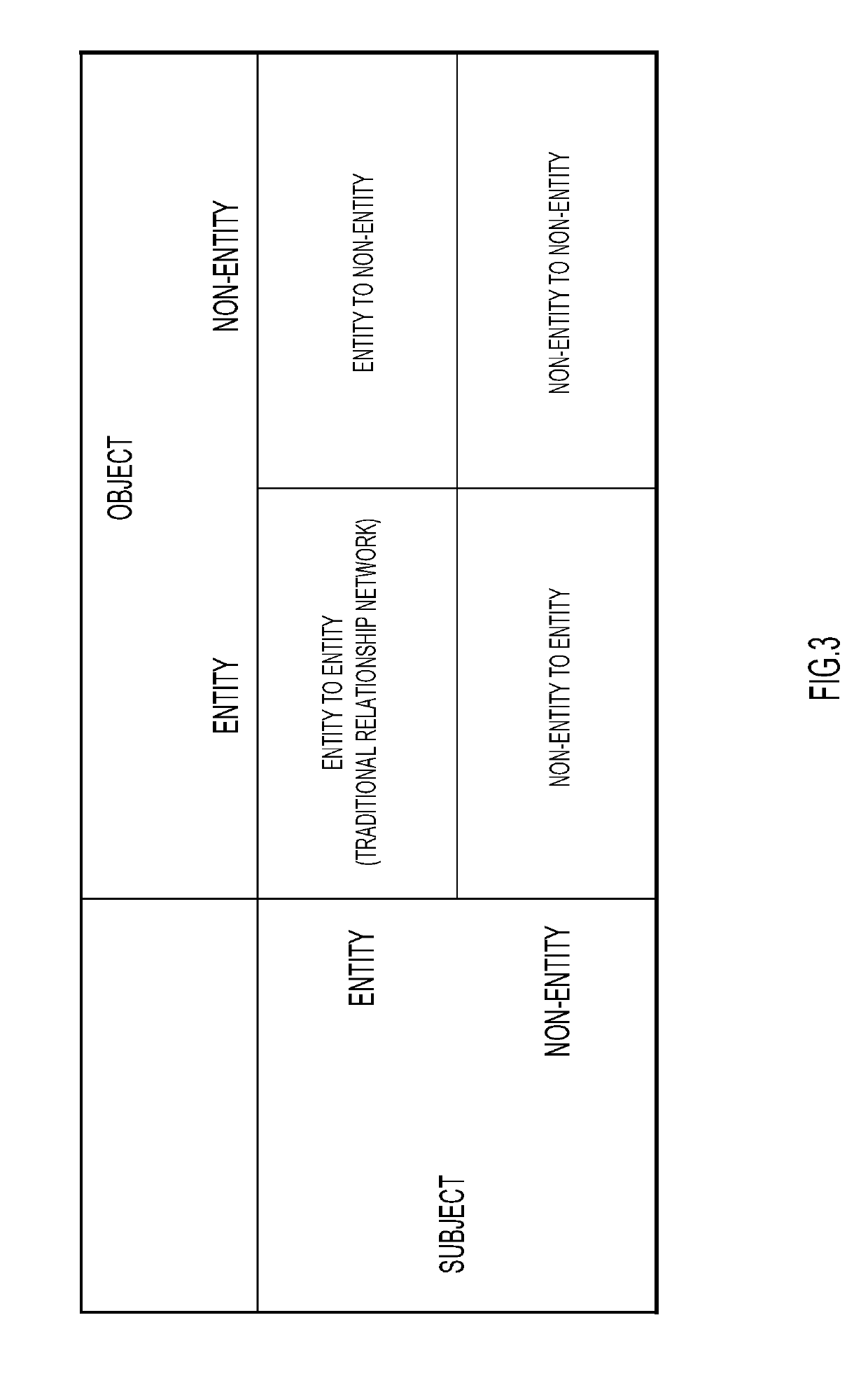Combining semantic relationship information with entities and non-entities for predictive analytics in a cognitive system
- Summary
- Abstract
- Description
- Claims
- Application Information
AI Technical Summary
Benefits of technology
Problems solved by technology
Method used
Image
Examples
Embodiment Construction
[0015]Techniques are provided for extracting and annotating entity and non-entity information in order to improve predictive analytics in a cognitive system.
[0016]An example environment 100 for use with present invention embodiments is illustrated in FIG. 1. Specifically, the environment includes one or more server system(s) 10, and one or more client or end-user system(s) 20. Server system 10 and client system 20 may be remote from each other and may communicate over a network 30. The network may be implemented by any number of any suitable communications media (e.g., wide area network (WAN), local area network (LAN), Internet, Intranet, etc.). Alternatively, server system 10 and client system 20 may be local to each other, and may communicate via any appropriate local communication medium (e.g., local area network (LAN), hardwire, wireless link, Intranet, etc.).
[0017]Client system 20 enables users to submit queries (e.g., queries for predictive analytics, etc.) to server system 10...
PUM
 Login to View More
Login to View More Abstract
Description
Claims
Application Information
 Login to View More
Login to View More - R&D
- Intellectual Property
- Life Sciences
- Materials
- Tech Scout
- Unparalleled Data Quality
- Higher Quality Content
- 60% Fewer Hallucinations
Browse by: Latest US Patents, China's latest patents, Technical Efficacy Thesaurus, Application Domain, Technology Topic, Popular Technical Reports.
© 2025 PatSnap. All rights reserved.Legal|Privacy policy|Modern Slavery Act Transparency Statement|Sitemap|About US| Contact US: help@patsnap.com



